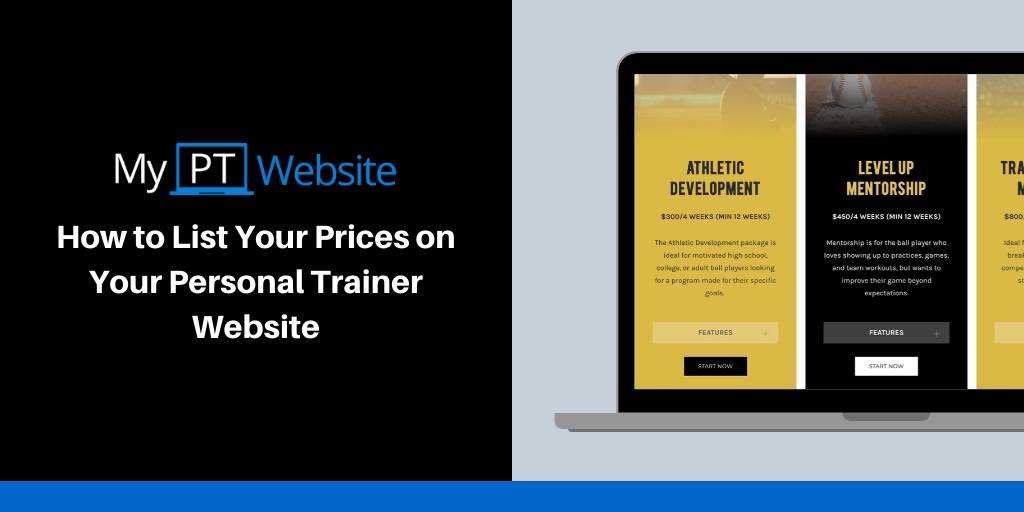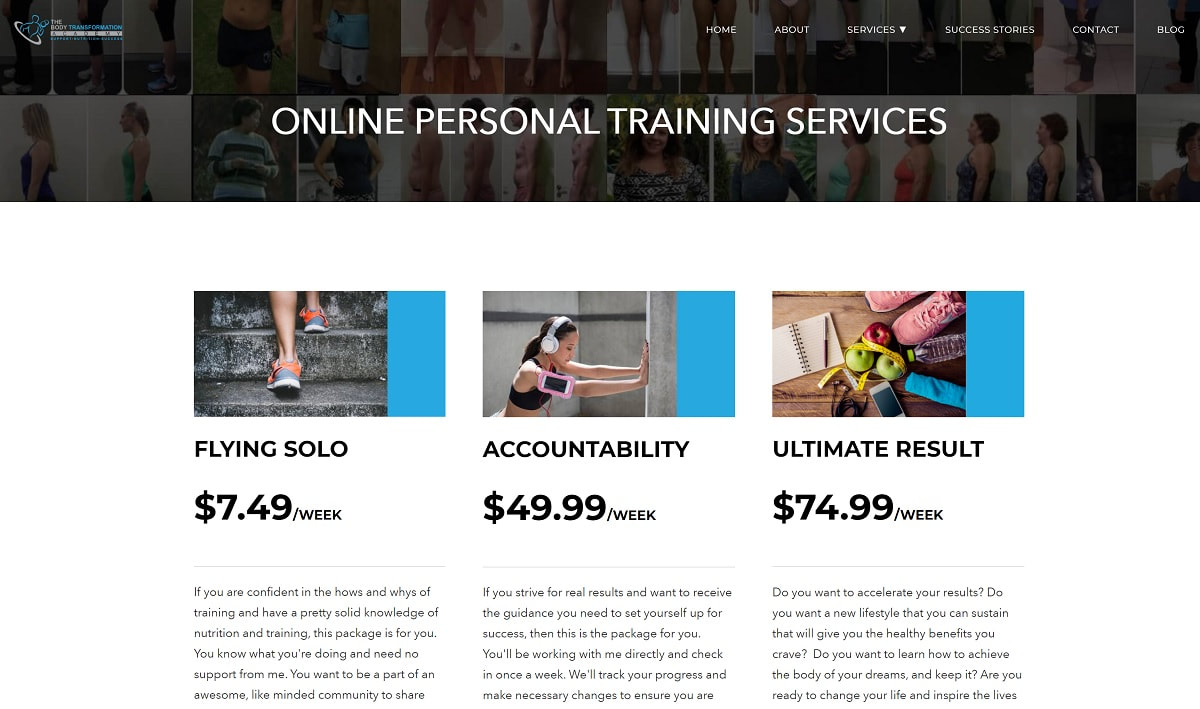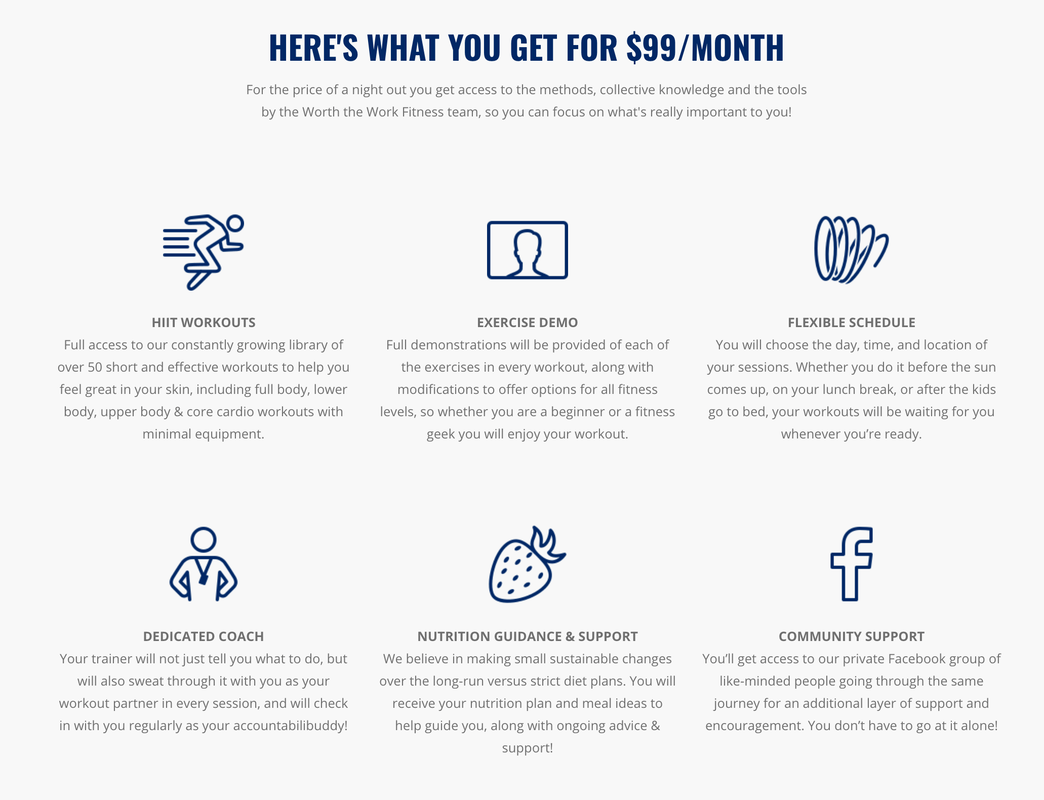Charging for personal training rates and packages is a confusing element of having your own fitness business. If you ask an expert how to price your services you'll always get "it depends" as an answer, which leaves you plucking a number out of thin air. Then how to display your prices on your personal trainer website is even more complex.
Before we dig in to what a personal trainer cost and how to price your services, then display them on your website, we'll need to cover what is one of the most controversial topics when it comes to pricing. Should you list your prices on your personal trainer website.
Should You List Your Prices on Your Personal Trainer Website?
Unfortunately, lots of personal trainers ask marketing experts this questions. Marketing experts that are usually selling business to business services and giving business to business advice.
This often leads to advice that isn't specific to a business to consumer personal training business. Nor does that advice consider the user experience a potential client might have on your website.
Simply put, you probably should list your personal trainer rates on your fitness website. If you genuinely can't, then at least list a "from" price. Here's why:
In short, listing your prices makes things simpler, easier for your website visitors and time saving for your. Here's a bit more about that.
5 Reasons You Should List Your Personal Trainer Prices
This often leads to advice that isn't specific to a business to consumer personal training business. Nor does that advice consider the user experience a potential client might have on your website.
Simply put, you probably should list your personal trainer rates on your fitness website. If you genuinely can't, then at least list a "from" price. Here's why:
- Get shortlisted - website visitors will often shop on price and if yours isn't listed, they'll click the back button and head to the next site.
- It's just nice - how many times have you landing on a site, seen there isn't any pricing and clicked the back button?
- Improved systems - PT's that complain of time wasters getting in touch from their site are often the ones that don't list prices.
In short, listing your prices makes things simpler, easier for your website visitors and time saving for your. Here's a bit more about that.
5 Reasons You Should List Your Personal Trainer Prices
A Simple Way To Price Your Fitness Services
Regardless of how you deliver your training - in person or online - there are four main factors to consider when setting your pricing.
So if you're a personal trainer who's just starting out and works in a commercial gym, you may charge $50/hour and a breakdown of that might look like this.
But now let's say your client wants to add in a friend.
This is also a really simple way of explaining to clients WHY the fee is more.
And with some percentage adjustments based on your current business model, you can apply it almost any circumstance.
- Time: the time you spend with the client during the exercise, the time spent programming, the time spent on check-ins or additional consultations (nutrition, injury rehab etc.), time spent researching and learning about their specific needs.
- Space: access to the gym space, a park and the costs involved with renting or owning that space.
- Resources: equipment that you buy yourself, online personal training apps, including consumable things like stationery.
- Expertise: The knowledge you have, investments in books or courses to properly educate yourself on their needs.
So if you're a personal trainer who's just starting out and works in a commercial gym, you may charge $50/hour and a breakdown of that might look like this.
- Time (1 hour) = $12.50
- Space (gym rent) = $12.50
- Resources (forms, software, etc) = $12.50
- Expertise (programming) = $12.50
- Total = $50
But now let's say your client wants to add in a friend.
- Time is the same = $12.50
- Space is the same = $12.50
- Resources increased due to paperwork and equipment = $12.50 x 2
- Expertise for each has also increased to consider the needs of each = $12.50 x 2
- Total = $75
This is also a really simple way of explaining to clients WHY the fee is more.
And with some percentage adjustments based on your current business model, you can apply it almost any circumstance.
Listing 1:1 Personal Training Pricing
If you offer personal training face to face on the gym floor, an additional consideration is your travel to and from work (time and money) and parking costs. You may also have to pay (either in money or time) some form of "gym rent" that should be factored into your pricing.
How you display this pricing on your personal trainer website will depend on your current business systems so here are some examples. The first is a fitness website we set up for a trainer who sells packages.
How you display this pricing on your personal trainer website will depend on your current business systems so here are some examples. The first is a fitness website we set up for a trainer who sells packages.
For our client, Ballplayer Academy, we had a slightly different approach. Athletes needed a set number of weeks to accomplish a goal so the personal trainer rate was designed to reflect that. With each package being a minimum of four weeks but with different levels of support.
Listing Online Personal Training Prices
Listing online personal training prices on your fitness website usually involves some kind of tiered structure to help your website visitors easily identify which package is for them.
The lowest tier often comes with the least amount of support and can be a reasonably automated service. The mid and higher tier packages includes more systems and support respectively.
The lowest tier often comes with the least amount of support and can be a reasonably automated service. The mid and higher tier packages includes more systems and support respectively.
If you deliver personal training online, you've probably invested in software, such as PT Distinction, to help you provide the service. As well as an email marketing software, web hosting, additional marketing costs, etc. All those subscription fees should be covered in the price your clients pay for your online training services.
This next example is a site web built for a trainer that has a single service for one price. The goal of this page is to showcase to the website visitor what they get for that single price.
As you can see, the price is clearly listed and the goal of the page is to clearly detail what the client gets when they sign up for your service. This kind of pricing structure works great for services under $100 per month.
Listing Multiple Training Services
Next, we come to everything in between. Most personal trainers provide multiple services and we need a simple, straightforward way to showcase those services. The key here is to provide enough information that the client will get in touch but not so much that it can be overwhelming.
Here's one we set up for a client.
Here's one we set up for a client.
All three services are laid out side by side so the website visitor can easily see which might be the best fit for them and their budget.
An alternative to this would be to have a page per service and list the price of that service on each page respectively.
Listing Pay As You Go or Session Packs
PAYG has the benefit of feeling like a low barrier for your client initially while they get to know you. They are often more likely to train more frequently and enjoy a mix of one to one and group sessions this way. The drawback is that your income will be far more variable than when your clients pay you monthly and you may have to talk to them about payment more often.
With the session bundles or limited time programs (12-week, 16-week) your client makes a commitment when purchasing that package to stick it out till the end of it. Every now and then your business can benefit from a bigger income boost, so if your business setup allows, this may be a good way for you to make your cash flow a bit more reliable.
In this example we have single sessions and then 12 and 24 session blocks.
With the session bundles or limited time programs (12-week, 16-week) your client makes a commitment when purchasing that package to stick it out till the end of it. Every now and then your business can benefit from a bigger income boost, so if your business setup allows, this may be a good way for you to make your cash flow a bit more reliable.
In this example we have single sessions and then 12 and 24 session blocks.
As the number of sessions increase, the price per session is reduced and the client gets extra bonuses. The price per sessions is reduced because of the marketing costs involved in selling one sessions, less marketing, vs selling 12 sessions, more marketing.
Summing Up
The best way to list your princes on your personal training website will depend on a few factors, and all three services could use either payment method. You can see from the examples above that online training is best suited for a recurring payment, whether it's monthly or weekly, while with session based services, client may prefer buying a set number of sessions.














